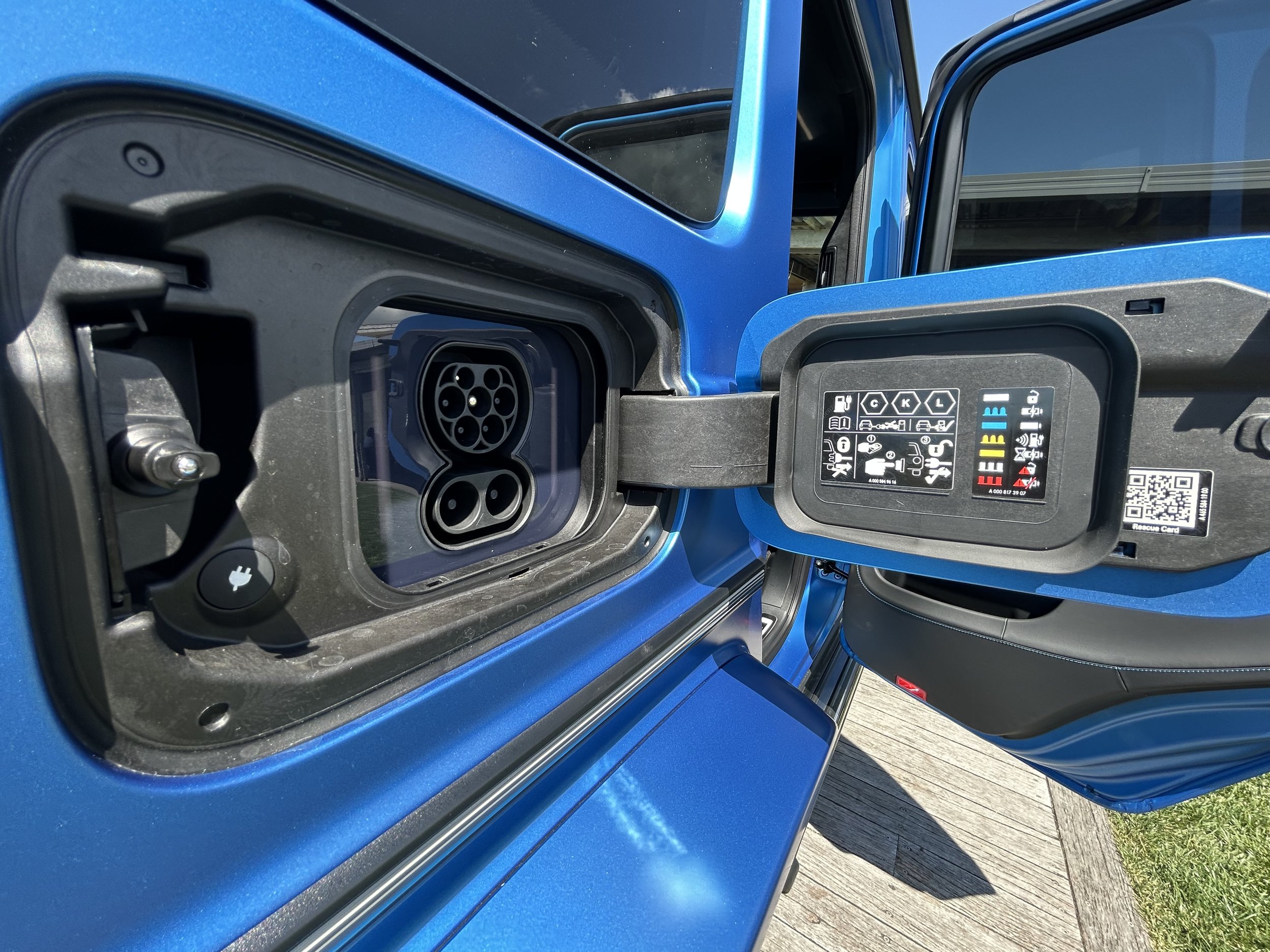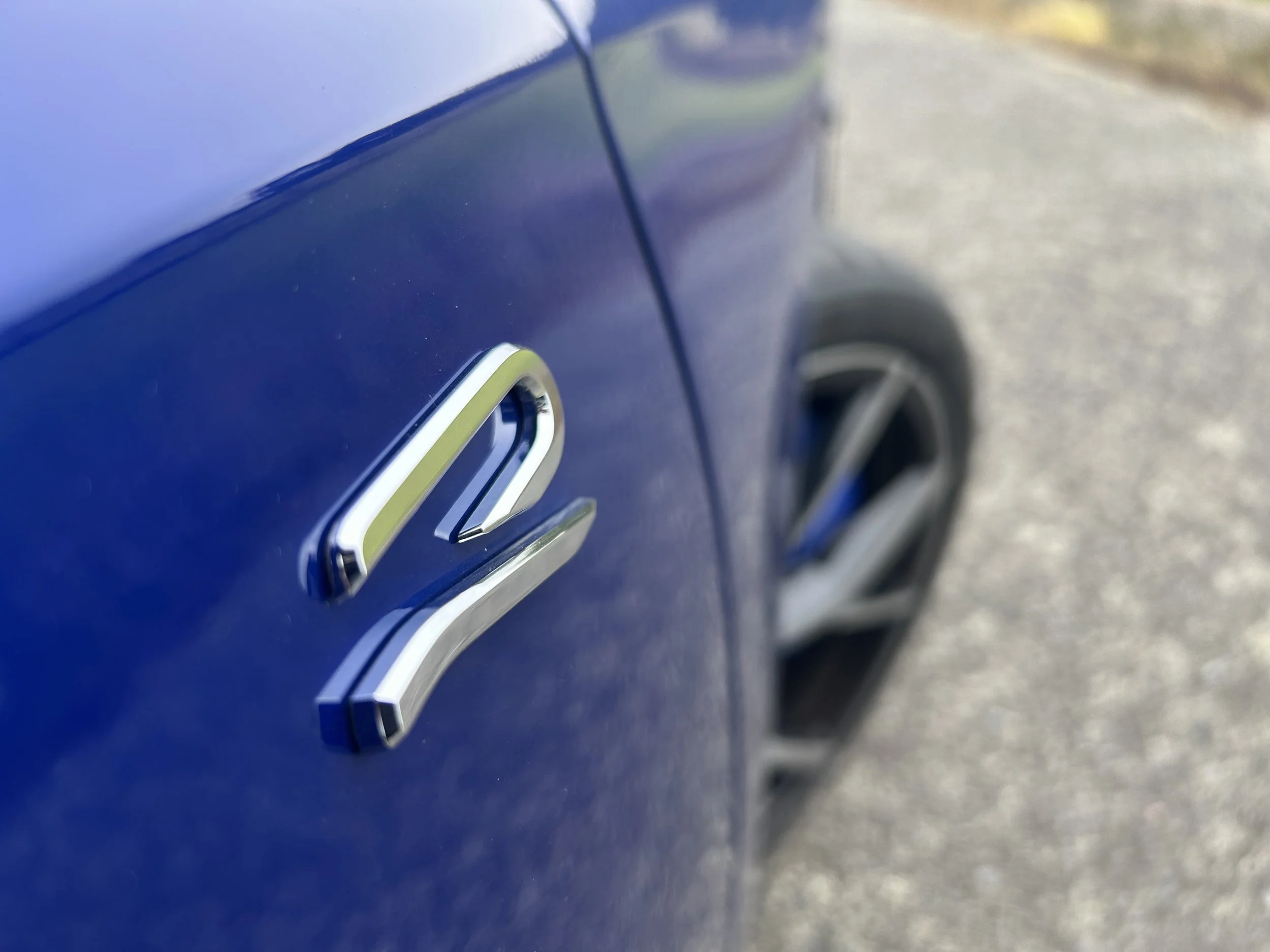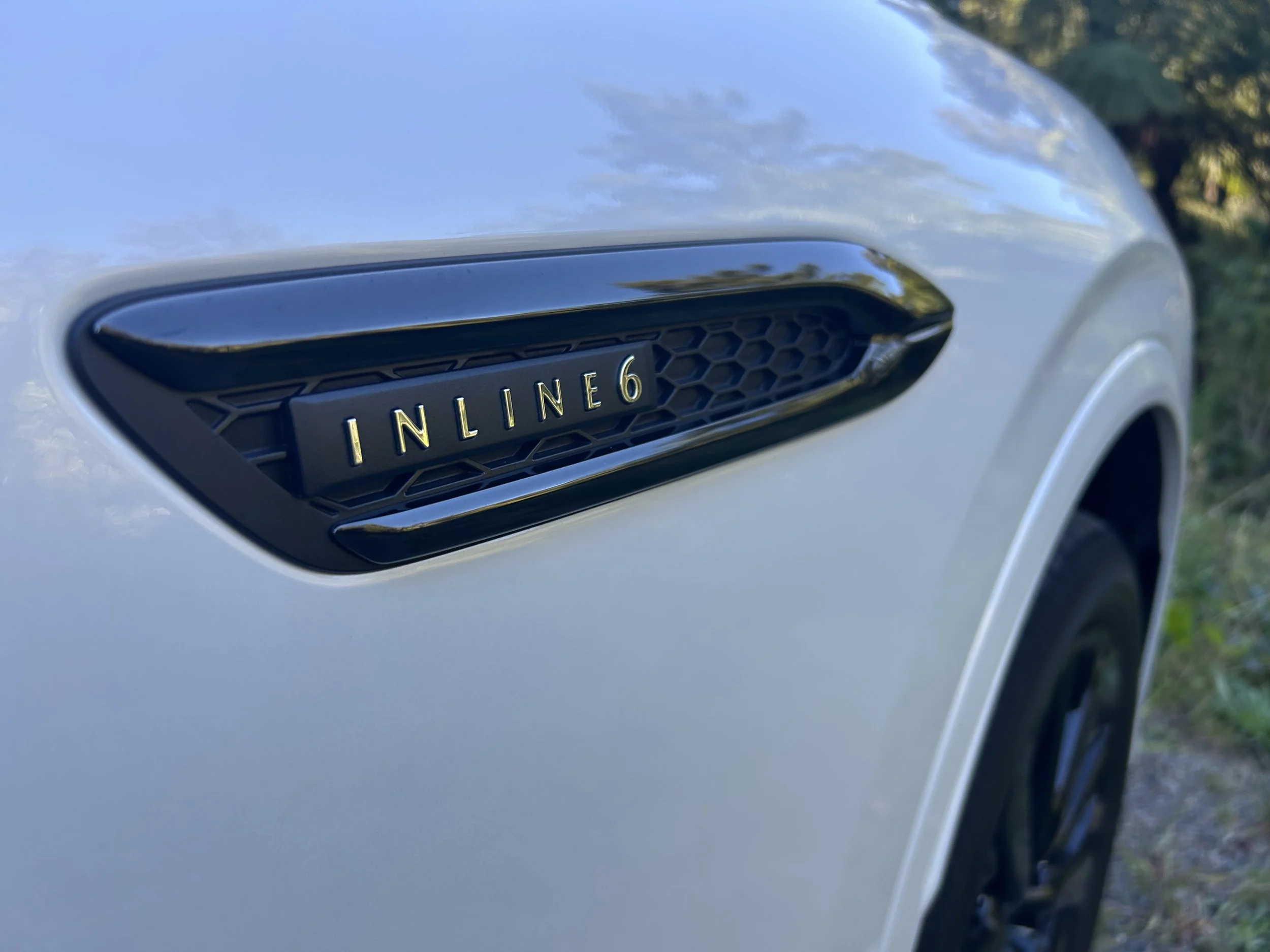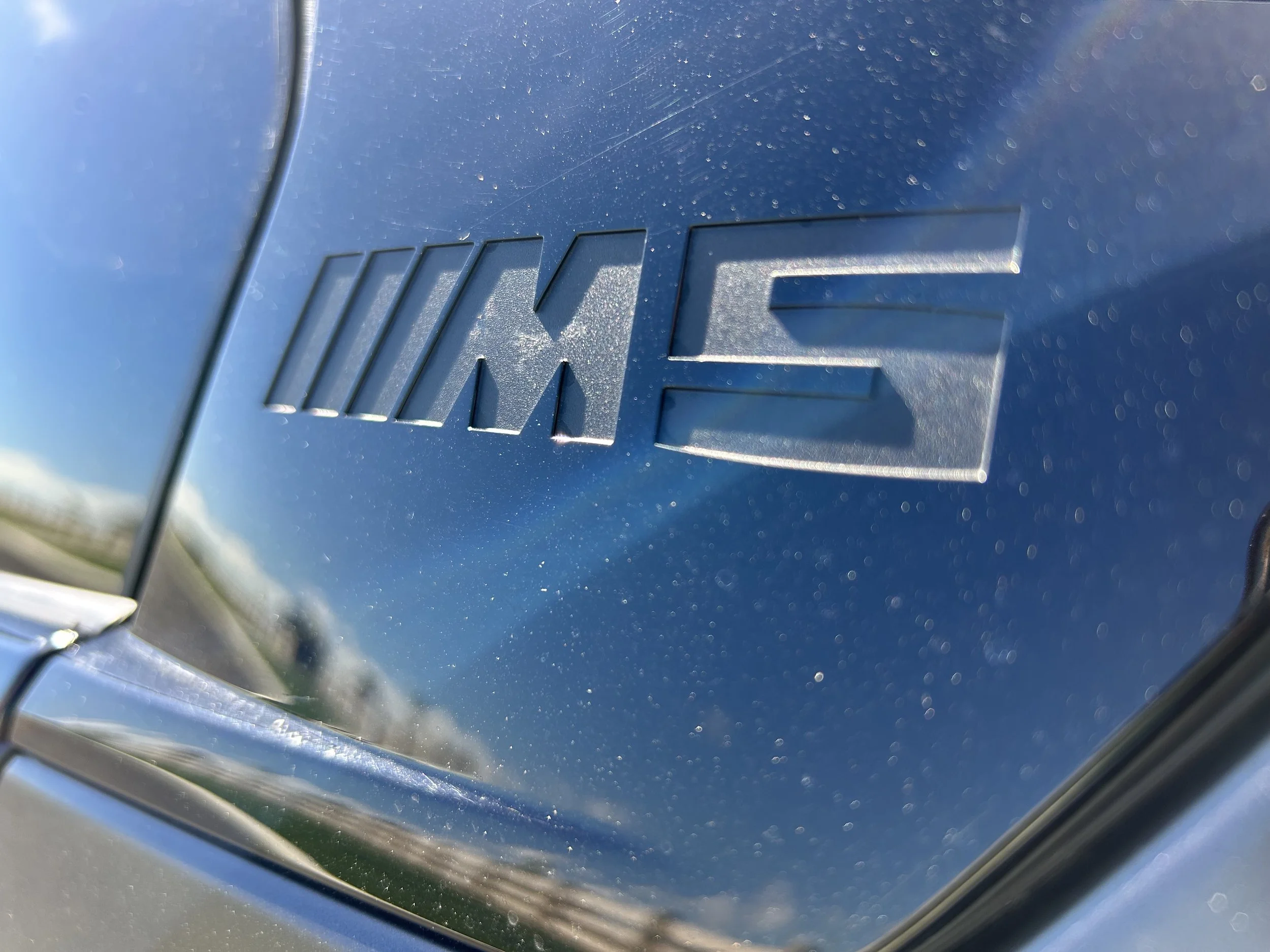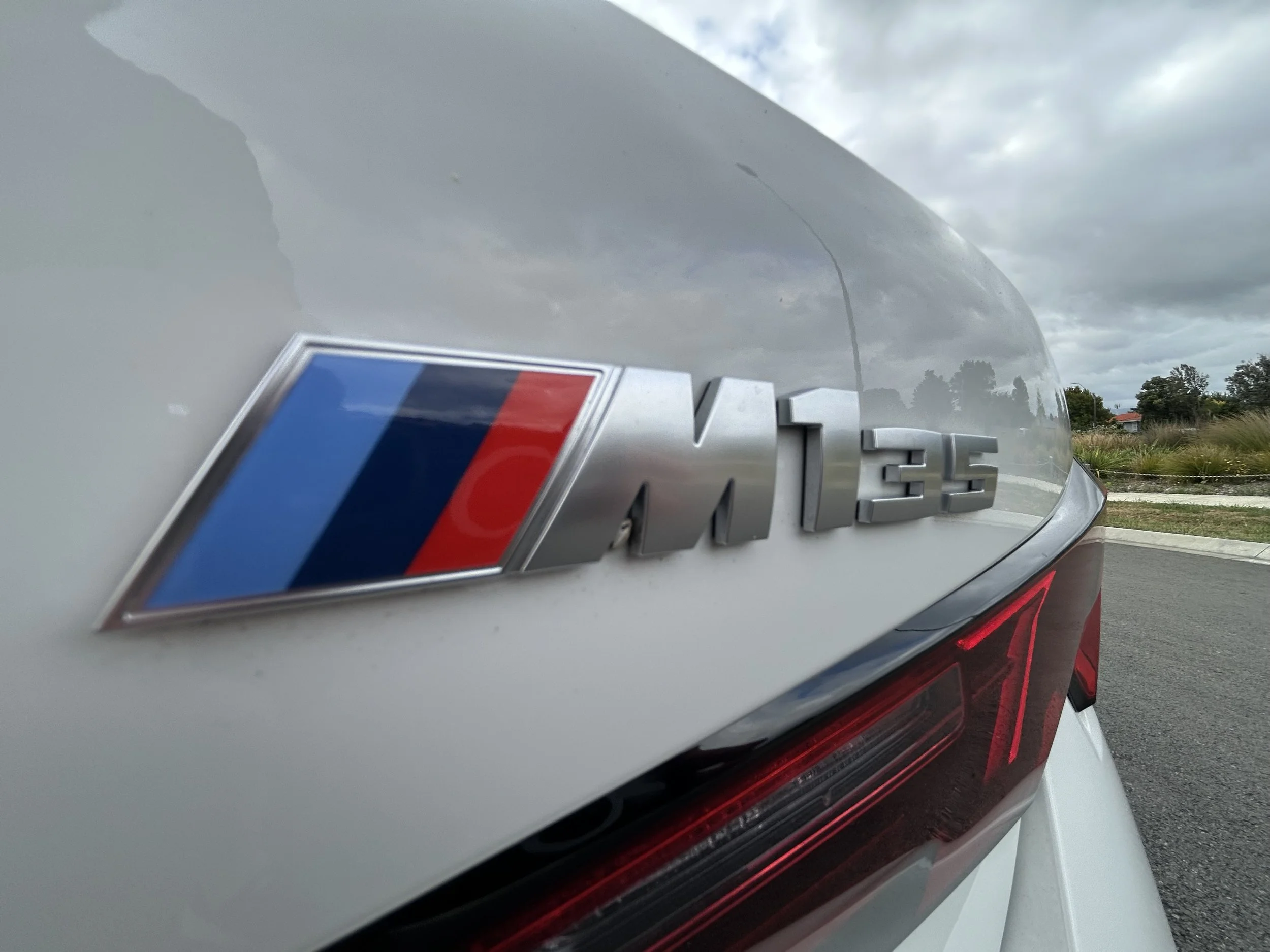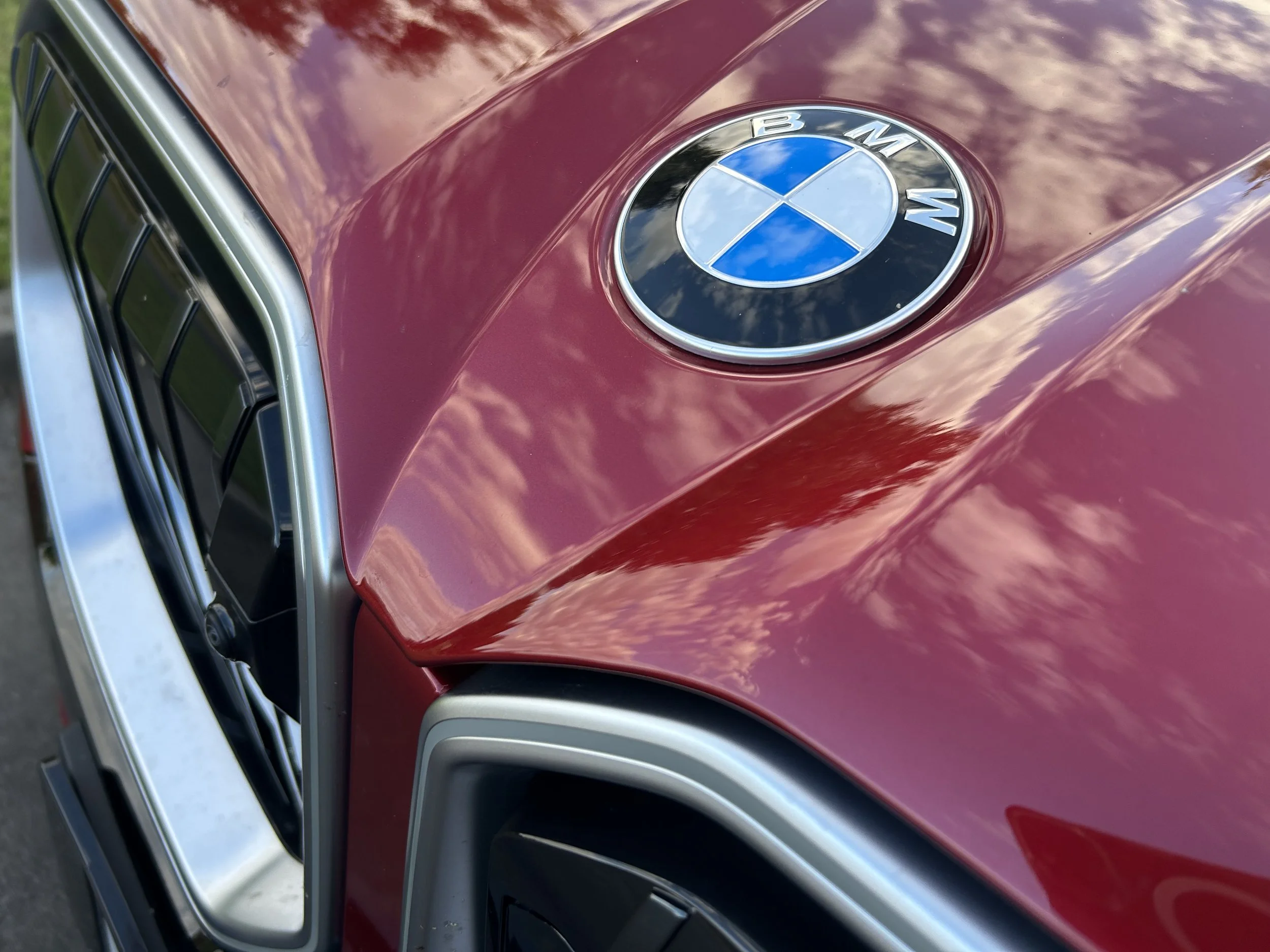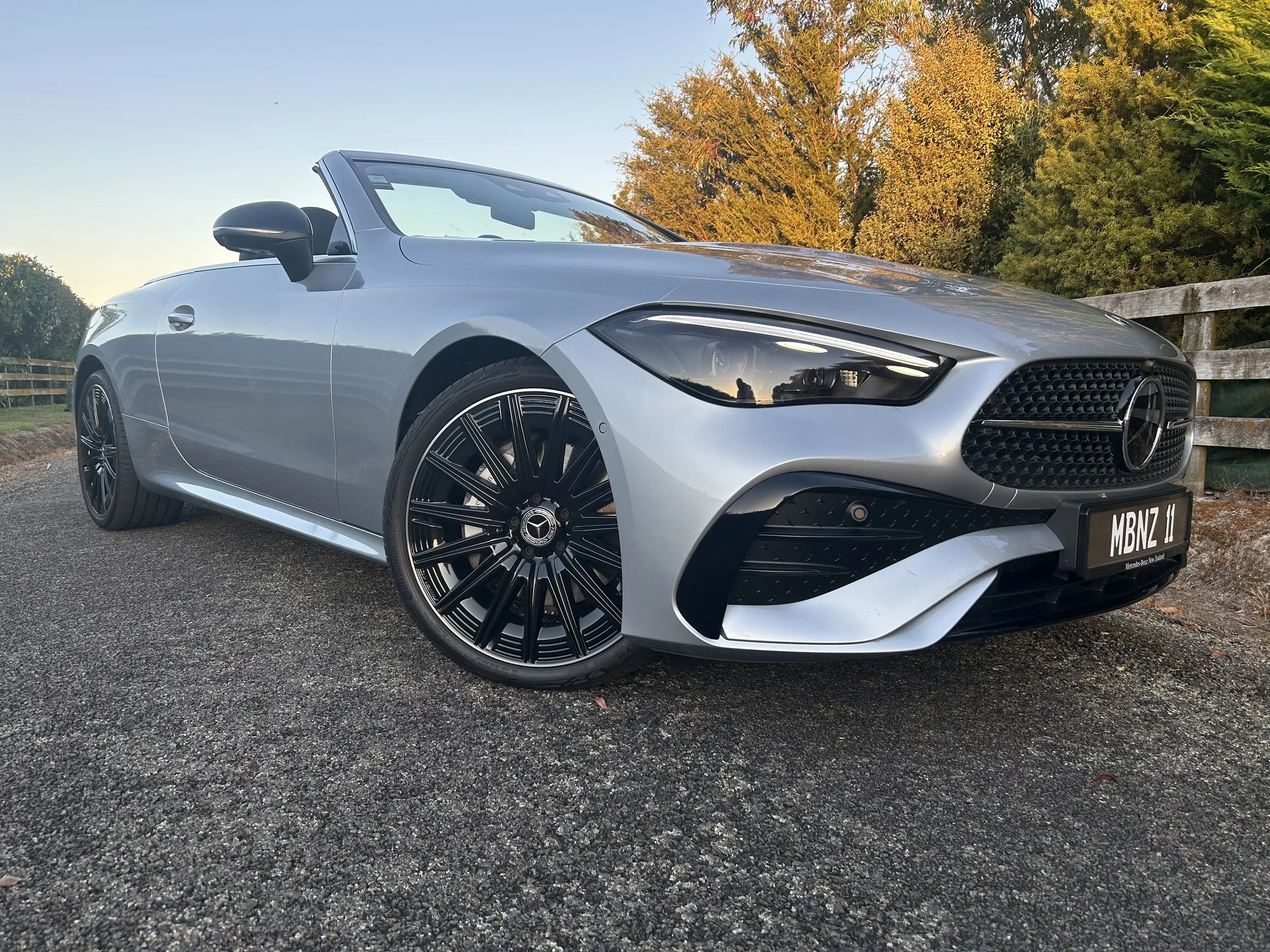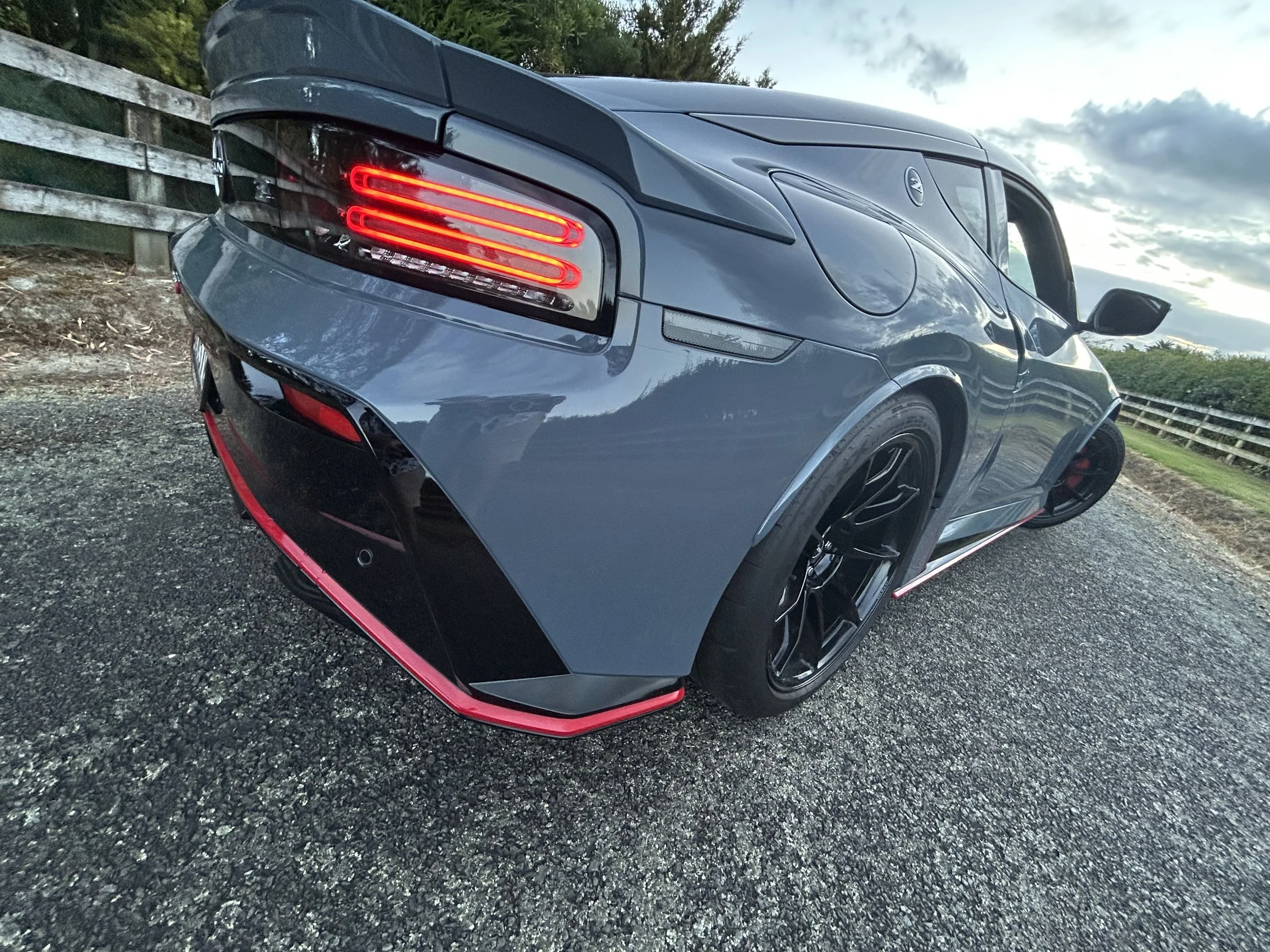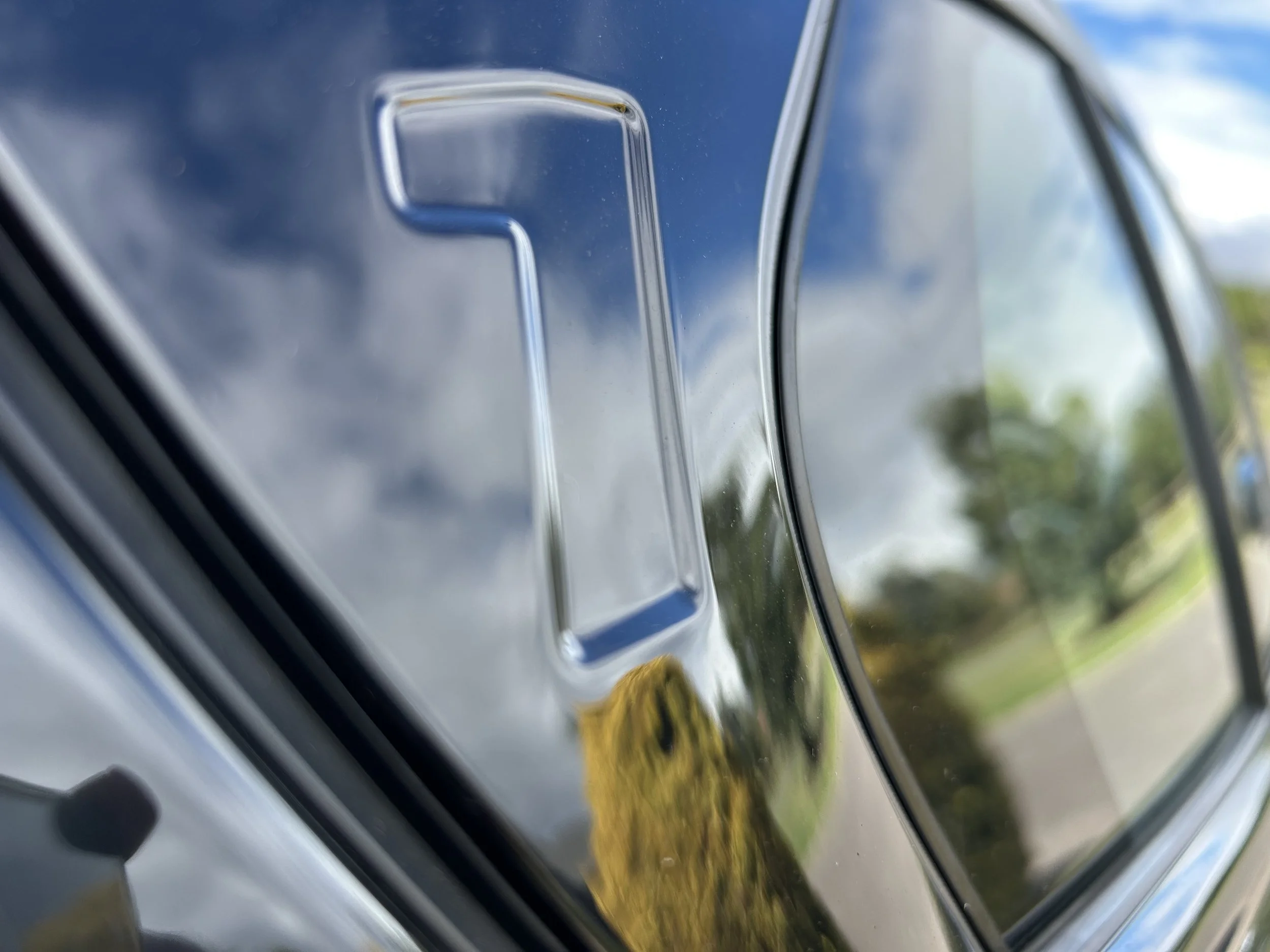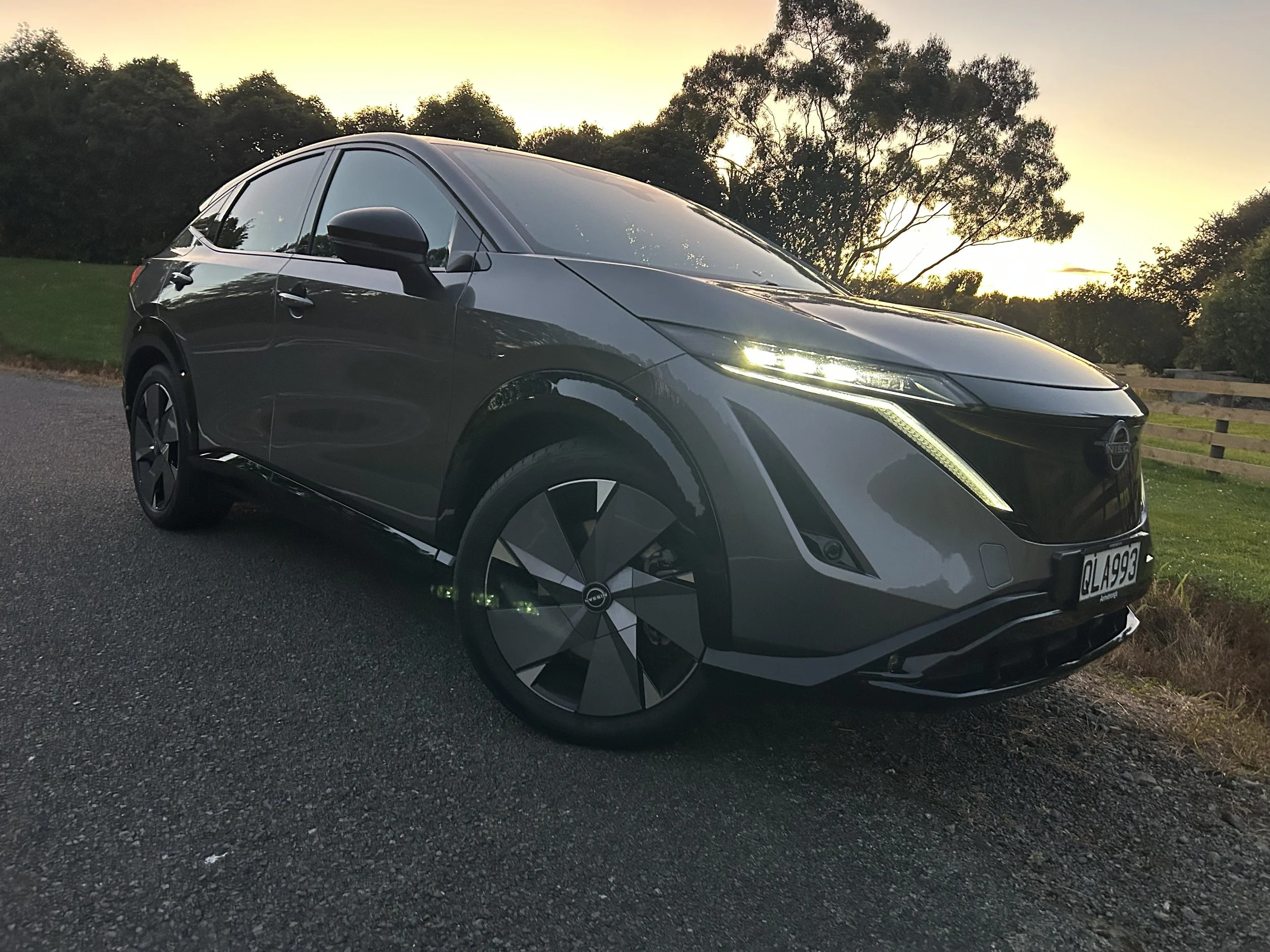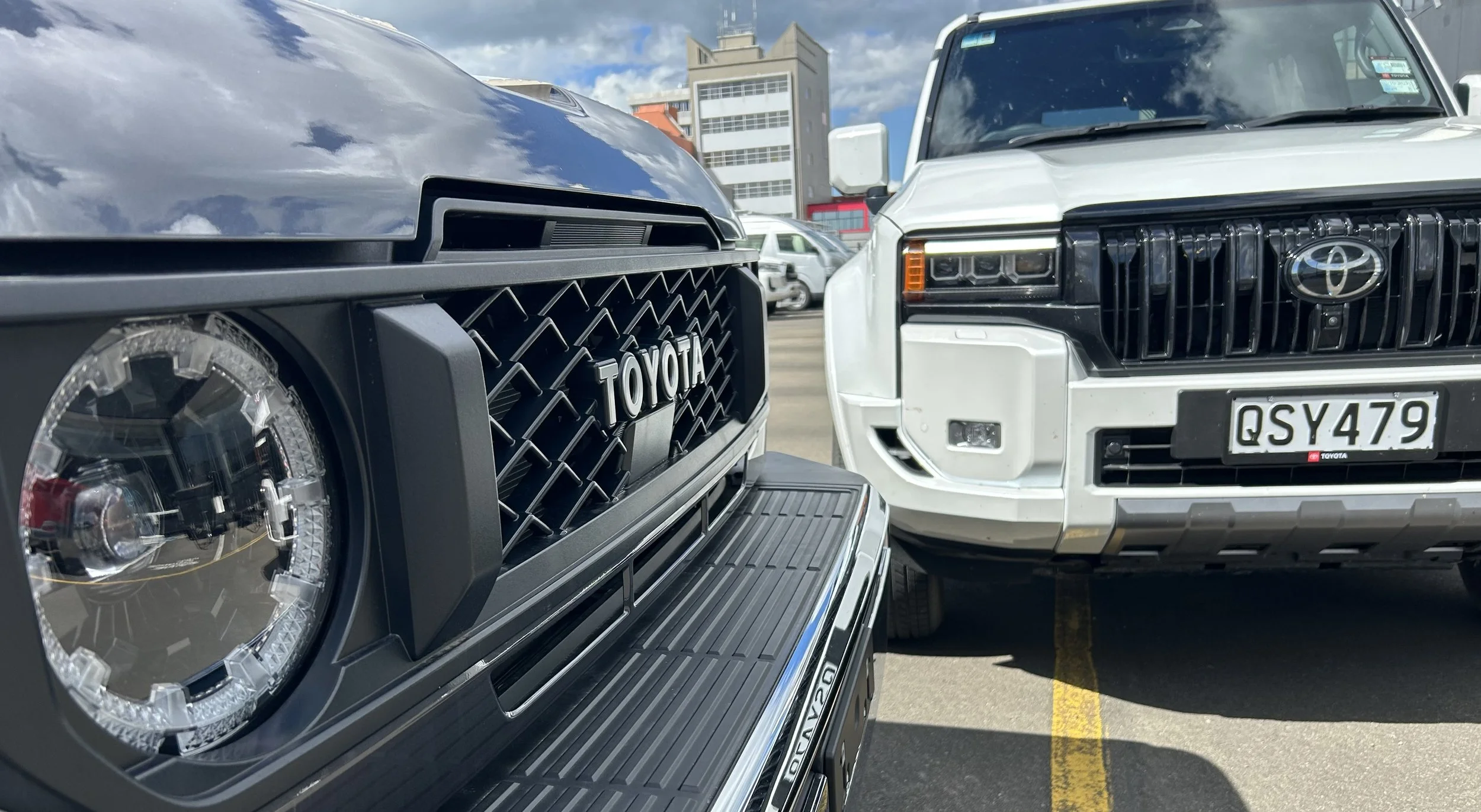Mercedes Benz G580 EQ Technology first drive: Mud with a plug
/Is Benz’s mightiest image-building machine a more thrill-inducing G-spot with a plug than when wed to a pump? We get the dirt.
ORIGINALLY designed - as if you couldn’t tell - for military application, the Mercedes that’s best at tackling every kind of environment is now trendily environmental.
The ‘G580 with EQ Technology’ - G580 from now on - is a massive technical triumph. With an electric motor within each wheel, it’s a four by four by four. Development must have been massively challenging. How often might the engineers wondered if they should have instead taken the hybrid-to-PHEV path rather than going full hog into the battery-sphere?
Still, the end result is here and standing tall as a gee-whizz security for an old-but-new vehicle that logically had no future by sticking to drinking dinosaur juice.
Out here it stands as a complete counter balance to the only other G-wagen sold here. The alternate choice rendered by Mercedes-Aufrecht, Melcher and Grossaspach is an astounding walloper but, as a deep drinking swaggard responsible for pumping out a volcano’s-worth of CO2 (335g WLTP), is no friend of the Earth.
Yet New Zealand is a big fan. Annual buy-in generally sitting at 80 units speaks to significant social irresponsibility. How many of those will consider leaving bad for good? Benz is prudently making no predictions, but vaguely offers thought about potential for this one drawing new business.
One appeal of the old G-wagen is that there’s nothing else like it. Ditto for the new. For all the familiarity, the G580 is a true pathfinder.
Range Rover has a fully electric coming this year. but it’s not like this. Japan Inc does old-school large with Landcruiser and Patrol, but the Nissan remains wed to a petrol V8 and Toyota’s closest electric-involved effort, a mild hybrid 2.8-diesel in the Prado, is nowhere the same. Rivian’s R1? ‘Long Way Up’ integrity counts, but it’s not right hand drive, ditto the Hummer EV. China Inc might throw in something in time … but you’d have to carefully consider the quality.
So, in the here and now, the G580 holds this ground alone. And if those committed to the petrol beast are broadminded enough to have a go, they should surely agree that, drivetrain aside, the G580 is by and large the same kind of vehicle they like.
It definitely looks right. The legendary square-jawed shape achieves just a few subtle nods to aerodynamic efficiency, but arguably none you will immediately notice.
Unless a G580 owners buys a black flat panel to replace the usual grille, the most obvious visual tell is a slim exterior cargo bin at the back, called the Design Box, which houses a charging cable where you'd expect to find the spare tyre (which it doesn’t have). Explore further and, flipping the fuel flap reveals a plug input and, lifting the bonnet reveals …. well, just a plastic shroud.
Dimensional difference with the ICE choice is millimetre. In respect to size, it seems more gargantuan than it really is. For instance, as much as you’d swear otherwise, in all dimensions save height G580 is more compact than the Mercedes GLE SUV. Yet you only mainly notice this in respect to interior space. the G being cosier for rear leg room.
It offers a very posh and super high-tech cabin, still seating five, still provisioning identical 620-1990 litres’ luggage capacity, with the same theme of upright design, with an excellent view out in all directions and enough of a sense of quality to remind this is a hand-made model.
G580 has almost all same convenience and comfort features as the G 63 AMG, though some controls rendered in metal in the ICE are haptic here. It takes the latest in-car tech, via a 12.3-inch digital instrument cluster and an equally-large infotainment screen, with inbuilt AI (artificial intelligence) that’s been designed to learn your daily habits behind the wheel.
G-wagens are built to go anywhere. It’s a shame few owners will likely get them as grubby as we did, because it did pretty well.
There were a couple of hiccups with traction that would have been sorted dropping the tyres from their 40PSi road pressure. Ours had a brief tantrum and momentarily abdicated its low range off-road crawl setting; we’d just been through a whole lot of muck and suspected a sensor had fouled. Putting it to rights was the equivalent of a computer control-alt-delete: Turn off the ignition, lock and unlock, turn it on again. Sorted.
The G580 should be good in the gunge, because the electric implementation builds into the old-school structure of a ladder frame design with independent front suspension and a solid rear axle. The electric ingredients are incredibly well protected from the elements; the carbon composite under-body shrouding is basically to military grade, being 26mm-thick. So confident is Benz that, with the electric, the wading depth rises from 700m to 850mm.
A selectable low-range feature works similarly to a range selector on an ICE vehicle. Sure, the ICE cars have three differentials whereas the EV has none. But Mercedes has integrated a virtual locking differential using torque vectoring that seems just as effective.
You also tick off the same smart features designed to enhance off-road capability include the Off-road Cockpit with ‘transparent bonnet views.’
This system is essentially a 360-degree camera that provides the driver with a clear view of what's directly beneath the front wheels, helping to avoid rocks and other obstacles that could damage the undercarriage.
Four electric motors, one on each wheel, each with its own two-speed transmission to give a true low-range off-road mode. This incredible feat is great for nifty footwork; each corner is able to fine tune traction opportunity well beyond the remind of a combustion engine product.
G-Turn is the 360-degree turn you've likely seen online, while G-Steering locks the inside rear wheel for tighter turns. The only G function that fails to hit the spot is “G-Roar,” a synthesised soundtrack that strives to match the V8 grunt-thunder so appealing to the AMG G63 tribe. Successfully? Of course not. It could use a better name.
This for $231,399 in base form. Not the one seen here. The first arrivals are in a more fulsomely-kitted Edition One format, for $276,000. Lots of special exterior and interior detailing, a bespoke colour option of South Seas Blue Magno, aero-optimised black wheels and the Design Box include. Benz will not say how many Edition Ones it has secured, but the factory has completed our allocation, with some still on the way.
Had it not retired from the scene last year, the $217,900 G400d diesel would logically be the comparable version. But there’s good reason nonetheless why it will now be measured against the up to $112,501 dearer G63.
The G63’s twin-turbo 4.0-litre V8 engine makes a maximum power of 432kW and 850Nm of torque. A hybrid motor adds 15kW/200Nm. It’s a titan. The G580 has four electric motors, one at each wheel, making 438kW and 1164Nm. Even more of a powerhaus, then.
The G63 is faster off the line and overall. It will see 0-100kmh in 4.3 seconds with the Performance Pack everyone buys (else they’ll suffer being 0.1s slower) and can hit up to 240kmh with that feature. The G580 uses 4.7 seconds to nail the open road speed from a standing start and restricts to 180kmh top speed. Because of the immediacy of electric, I suspect the G580 will be more brutal at step off.
Running costs are a world apart. The AMG’s 48 volt electric assist is only for an integrated power boost and doesn’t offer only an electric drive mode. It has a WLTP fuel economy of 14.7 litres per 100km, but consumption comfortably north of 20 litres per 100km is often quoted.
There’s no local WLTP range figure for G580 yet, but it’s guess-timated to be 450 kilometres-ish. European WLTP testing puts it somewhere between 434km and 473km. On the NEDC scale no longer relevant to NZ, but still used by Benz regionally because it headquarters in Australia (which still likes NEDC), it’s 567km. That estimate seems totally ludicrous.
In real life usage it might be that G580s will be seeking a plug after 350kms. On past experience, that’s around the same distance when hard-driven G63s start seeking fresh high-octane.
The EQ’s 116kWh (usable content) battery is one of the biggest in the business. It can charge up rapidly from fast DC chargers, at up to 200kW, with 10-80 percent in 32 minutes, asking somewhat more time on 50-75kW types. Home charging is theoretically possible, but will really take ages.
If you were considering mucking in with a G580, you need bear in mind that the reality that the terrain it can tackle well will very likely always been some distance from a charger.
Without a big battery, the G580 would be a no-go for even trying. The one it has is fine, the one it potentially might ultimately one day transfer to would be better. Yesterday’s event coincided with news Benz has just starting testing a lighter, smaller and more powerful solid state battery for its EQ range. If it works? You would hope this lugger will be an early candidate for a transplant.
In current state, G580 hefts a 57.6kg battery and has a kerb weight of 3085kg, which is 535kg more than the AMG. Kerb weight is the kilo count of a standard empty vehicle. Gross vehicle mass - the maximum a vehicle can weigh when fully loaded as specified by the manufacturer - comes to 3500kg.
That is perilously close to the limit for those with normal car driving licences to legally take the wheel. Another consequence of that weight also reveals.
For all that ICE G-wagens are employed as trophy toys, they do have aptitude as genuine tools, being rated to tow 3500kgs.
Not so the G580. It has no tow rating whatsoever. Moreover, Mercedes insists nothing, not even a bike rack, can be affixed to the back end. They won’t allow a roof rack, either.
The only choice is to slot stuff into the cabin, and that also demands consideration beyond working out how to make best use of the limited room. Payload is the maximum load your vehicle can carry as specified by the manufacturer; Mercedes’ maximum is a very dainty 415kg, a figure set to avoid it wandering into commercial vehicle territory. Giving a ride to four big blokes could theoretically tip the scales.
First taste of the G580 came at the Kauri Bay Boomrock off-roading facility outside of Clevedon, near Auckland, where the car’s off-seal abilities were comprehensively demonstrated.
We had fun with “G-Steering” function, usable only in the Rock drive mode with the low-range gear reduction switched on. This makes use of the individual motors to rotate the car around an inside rear wheel. It was brilliant for pivoting the G580 through tight turns, including gateways. You’d use it, for sure.
G-Turn, aka the “tank turn”, is explained as the function you use when, having gone up a dead-end track, you’ve found there isn’t enough room to execute a U or three or more point turn.
Probability is that if you witness a G580 spinning around on its own length by rotating the wheels on the right and left sides in opposite directions in a public environment … well, it’s going to be someone making mischief with their Merc.
They just need be aware that, if choosing to apply pirouetting mode as a look-at-me then they will have to choose a low-grip surface, else it either won’t work at all or, if it does, their tyres and maybe even the mechanicals will suffer. That’s why the system only allows two full rotations of the car before resetting. It’s quite easy to initialise; the driver chooses the direction of rotation using the paddles behind the steering wheel while holding the accelerator pedal down and keeping the tiller straight.
As none of the cars were yet registered, there was no on-road driving. Had we hit seal, the car would have been running in either Normal and Sport settings. Overseas tests say the latter does help a little with body control in the corners, thanks to air suspension and adaptive damping. But they also point out that this G-wagen is like another; not cut out for big speed. Consensus is that it’s better to amble around and enjoy the effortless acceleration from time to time when required.
So the point is? Hard to see one beyond Benz basically doing what Benz often does; namely, setting out to prove that anything is possible.
The G580 must have cost the equivalent of a small nation’s GDP to develop and likely won’t ever make a cent of profit.
However, the ‘Gelanderwagen’ - German for cross-country vehicle - is a legend that has been in production since 1979.
It’s clearly a habit they didn’t want to break. Now they don’t have to. So long as customers share the vision and keep the faith.
The writer attended as a guest of Mercedes Benz NZ, with travel, accomodation and meals provided.





